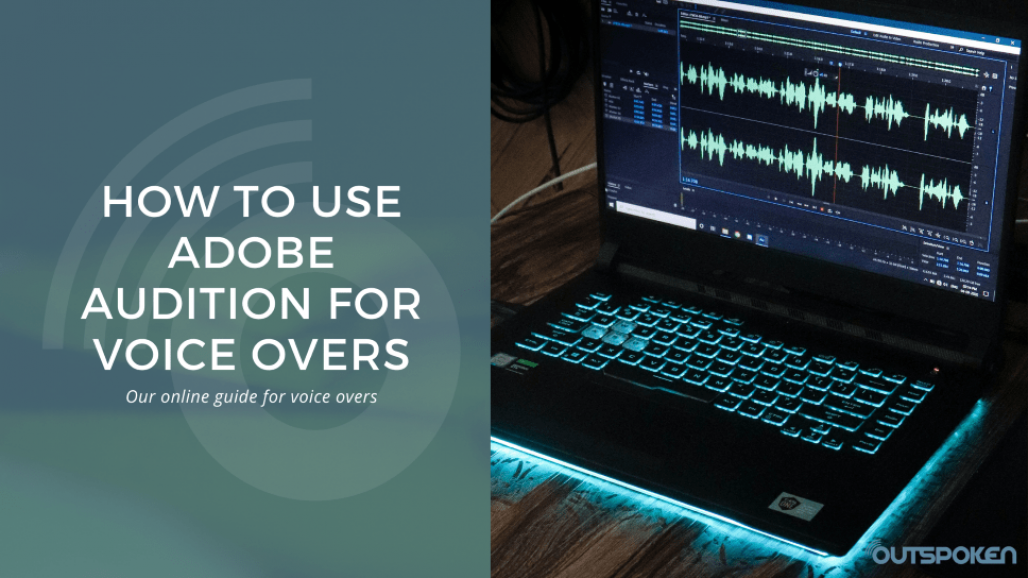Discover how voice-over psychology influences consumer behaviour in video marketing. Learn the neuro...
How to use Adobe Audition for Voice Overs

Many people believe that the success of a voiceover is completely dependent on the skills of the voice actor, and whilst this is very important, the recording process is equally essential.
An excellent voice recording will ensure that the voice actor's vocal recording flows smoothly and comes across professionally, so it's essential that you get this right. One of the best ways to record, edit and export a smooth voiceover is by using Adobe Audition.
If you've never used Adobe Audition and have no idea how to record a voiceover with this software, have no fear - we're here to help you get started. Read on to find out how to use adobe audition for voiceovers, it’s actually pretty simple.
Preparing to Record your Voice Over
To record your voiceover in Adobe Audition, there are a few steps that you are going to need to take before you get started. These concern three key areas:
- Microphone Setup
- Audio Preferences
- Script Rehearsal
It should be obvious that you will need a microphone setup – this could be a budget setup such as a USB microphone or a more professional setup involving a condenser microphone, audio interface, and XLR cable. We would recommend the latter in combination with a pop filter as this will improve your recording quality.
Next, it’s going to be essential that you ensure your computer and Adobe Audition audio settings match the microphone you plan to use.
Head to the Preferences > Audio Hardware to ensure the right input is selected, and don’t forget to test to make sure your voice sound is recording. Whilst you are in these preferences, you should also consider setting your Buffer Size to 128 and your Sample Rate to 44100 Hz - this is the industry standard.
You should now be ready to start recording but consider rehearsing your script first if you haven’t already. This will ensure your voice recording is portrayed with confidence and will reduce the number of takes and thus save you valuable time!
Recording your Voice Over
Now that you are ready to record, let’s look at the first steps you must take. We’ll explain this through step-by-step form to ensure that everything is easy to follow:
- Step 1: Head to the File toolbar and select ‘New Multitrack Session’
- Step 2: Give the session file a name so that it is easy to find and ensure that the recording is set to ‘Mono’. You should also consider investigating the variety of session templates available within the software where appropriate. A great example of this is ‘Radio VO with Music Ducking’.
- Step 3: Drag and drop any relevant files that will require a voiceover (such as music or radio recordings) into the multichannel window – this will create a new channel for them.
- Step 4: On your blank voiceover channel, click the Inputs/Outputs button (shown as bidirectional arrows). Here you will need to select your microphone as a mono input.
- Step 5: Press the ‘I’ button on your channel to activate it for recording and start speaking to ensure that the recording levels of your voice sound are not too high (especially not exceeding 0db). This can be observed by the green level bar at the bottom, and is called ‘gain-staging’ - it’s an essential part of the recording process.
- Step 6: Once you are confident that the levels are appropriate, it’s time to record – hit the red record button in the centre of the workspace controls and start speaking. You should begin to see your voice recording appear as a waveform.
- Step 7: Click the stop button to the left of the record button when you’re done. Listen back to your recording with the play button to ensure you’re happy with the results.
Exporting and Using your Voiceover
Congratulations – you should now understand how to use adobe audition for voice overs. You will now want to export this multichannel session. Luckily, this is one of the easiest parts – you simply need to head to File > Export > Session and choose a file format and location for your audio file to be saved at. You can then access your audio file and send it to anyone to use!
Newsletter
Stay up to date with news and special offers. Get to know our new actors and features
NEED HELP?
Visit Frequently Asked Questions page or send us a question.











.png)











Comment